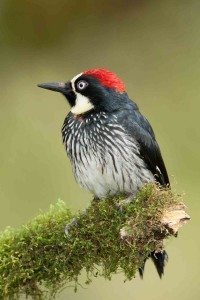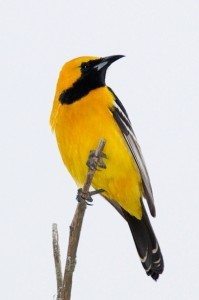From Strawberry Canyon to Mission Canyon
By Phila Rogers
After 61 years in my house on the hillside above Strawberry Canyon in Berkeley, living elsewhere seemed inconceivable. The live oak I planted 50 years ago had become the roof over my roof. It sheltered me and countless other creatures. In its youth, a wintering Red-bellied Sapsucker had decorated its young limbs with bracelets of holes that remained, elongated, as the branchlets grew to substantial branches.
I knew the direction and possible meaning of every breeze. I registered the moist arrival of the summer fog bank without looking outside. When the Varied Thrush piped its eerie song, I knew that October had arrived, and when the wintering Hermit Thrush softly sang its summer song in April, I knew it was about to leave.
Can such intimate knowing ever be achieved in a new location with so few years remaining to me?
Santa Barbara should have felt familiar when I moved there in September, as it had been the home of my grandparents and parents. The retirement home where I was to live is located near Oak Park along Mission Creek, two blocks from where my father grew up.
He told me stories about Mission Creek sometimes flooding after a winter storm, and how the pale owl who lived in the palm outside his bedroom winter frightened him. When I visit the park now in November, the piles of bone-dry boulders look as if water never flowed there.

To try and establish a bond to this new place, I joined a bird walk at the Santa Barbara Botanic Garden up in Mission Canyon. Like the U.C. Botanical Garden in Berkeley, this garden is located in the upper reaches of a canyon near a stream’s headwater.
I was heartened (overjoyed actually) to discover White and Golden-crowned Sparrows both singing. And as always, I enjoyed the bright colors of the Spotted Towhee. In general the birds seemed more like the ones you would expect to see over the hill in Contra Costa County with noisy Acorn Woodpeckers storing their acorns in their “granaries.”

Absent were the familiar Chestnut-backed Chickadees, Red-breasted Nuthatches, Fox Sparrows, and Brown Creepers. You are just as apt to hear a Canyon Wren as a Bewick’s Wren, and much less likely to hear a Pacific Wren, which favors damper canyons.
The difference between Strawberry Canyon and Mission Canyon is partly due to their topography and position along the Pacific Coast. Both the Berkeley Hills and the Santa Ynez Mountains began as sandstone deposits in a then-warm sea and were later pushed upward along fault lines. Thanks to a bend in the San Andreas fault the Santa Ynez are now a transverse range that faces south toward the sea instead of west like the rest of the coastline.



The ranges themselves appear profoundly different – the Berkeley Hills are rounded and richly green with new grass in the winter and with planted trees. The Santa Ynez Mountains are angular, stony, three-times as high, naked except for places where a carpet of olive-green chaparral covers the rocks. The canyons in the Santa Ynez are usually narrow defiles, approachable only by trails along seasonal streams. Mission Canyon, somewhat wider with a year-round stream, can be entered on a road.
While Strawberry Canyon resembles a green fan emerging from the Berkeley Hills, narrower Mission Canyon is hard to distinguish from the distance amongst all the pale sandstone. Though mild year-round, Santa Barbara has its moments of intemperance with torrential rains, occasional violent thunderstorms, and scalding, desiccating winds that can blow down the mountains in any season.
Though I’ve committed my aging body to the care of my new home, as long as I can, I will maintain a presence in my beloved Berkeley. “God willing and the Creek don’t rise,” I plan on co-leading the quarterly bird walk in early February at the UC Botanical Garden in Strawberry Canyon.

